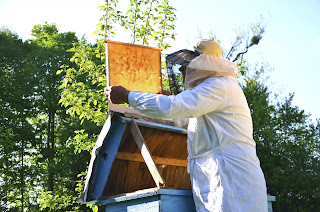Whether you’re interested in running a beekeeping business or just want to try your hand at some home-grown honey, once you know you’re going to start a beehive of your own, you’ll need to decide how to go about getting your hive. The big question is: Are you going to build a hive or buy a hive? For many beekeeping enthusiasts, this may be an easy decision. But for those who aren’t sure, here are a few pros and cons to keep in mind.
Buying a Beehive
If you’re ready to kick-start your beekeeping endeavor, perhaps consider investing in a ready-made beehive for sale. You can skip the hassle of researching how to build a hive (and then building it) and focus more on the bees themselves.
There are basically three main types of beehives. Depending on what your end goal is (and the time you want to spend), you’ll be able to decide which one best suits your needs. The three types are:
- Top Bar Hive – simple, easy access, requires frequent monitoring, no heavy lifting
- Langstroth Hive – most common type of hive, with lots of resources and supplies readily available for affordable prices and relatively little maintenance required; highest honey-making capacity
- Warre Hive – little maintenance required, few accessories required, lightweight boxes
This resource may help you to decide on what kind of hive you should get for your own garden. Once you decide on the type, have a look at the beehives for sale here at Paris Farmers Union, which include this maximum-strength 10-Frame Medium Super; this pre-assembled 10-Frame Deep Hive Body; and this Complete 10-Frame Beehive.
Building Your Own Hive
If you enjoy carpentry and have some experience, then why not try your hand at building a beehive for your garden? You’ll gain a better understanding of the inner workings of your hive, which will increase your chances of successful beekeeping. You’ll also save some money, although depending on exactly how much of the hive you build, you’ll still need to buy the materials and perhaps some of the parts. You can also buy a beehive set, which will provide you with all the parts of the beehive, ready to assemble.
If you do decide to build your own beehive, make sure you pay attention to the timber you select. It should be untreated or protected using a natural, non-toxic coating (this is especially important for organic, natural beekeeping).
You always want to make sure you’re buying parts or materials from a reputable seller for the best quality of materials that will make up a long-lasting, durable beehive. If you’d like to build just some parts of the hive but not the whole thing yourself, consider buying the frames, outer lids and queen excluder, as these are the more complicated components, and you can build the supers and the edges.
If you choose to paint your beehive, use non-toxic paint and make sure you choose a light color that will reflect light and keep the hive from getting too hot. Also, do not paint the inside of the hive.
Building a beehive requires extensive research and time, depending on your skills, so be sure to plan accordingly. You may want to reach out to a beekeeper in your community to learn from his or her experience for tips and best practices, which will vary by geographical location and weather.
Here are a couple of tutorials on how to build a beehive that you may find useful:
Bees are an essential part of nature and perform about 80 percent of all pollination worldwide. Without them, our world would be a very different place. They’re also declining in numbers, with almost half of all hives dying in 2015. Help your own garden and the world too, all while reaping the benefits of fresh, delicious honey right in your own backyard.







